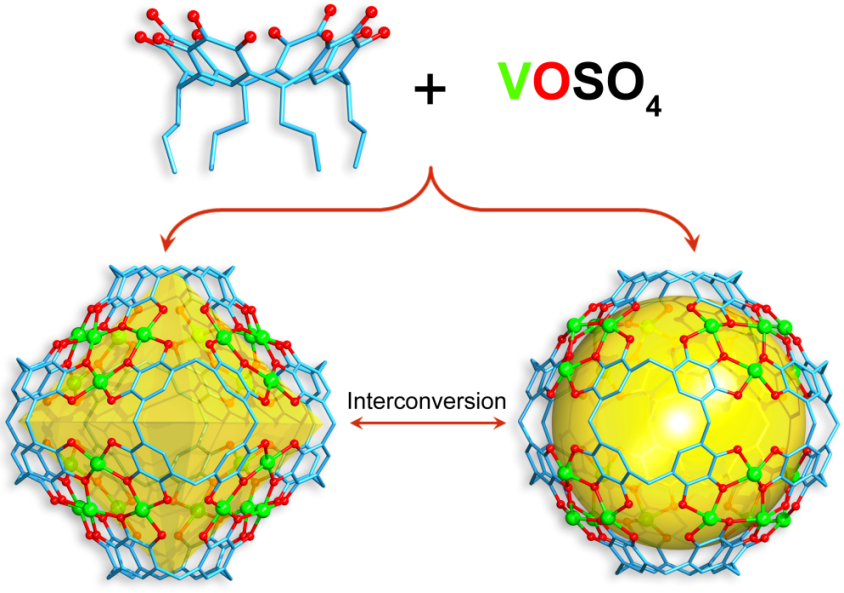Research into stimuli-responsive self-assembly and transformation behaviors in supramolecular isomers/quasi-isomers, which are more similar to those in natural macromolecules, has received a great of attention recently, because it is important to understand and further mimic the structural reorganization processes in biological systems.
The C-alkylpyrogallol[4]arenes(PgCn)-based metal-organic nanocapsules (MONCs) have been studied for more than ten years, but their metal centers are limited to Mg, Co, Ni, Cu, Zn and Ga, and the structural shapes are limited to hexameric octahedral, dimeric spherical and hexameric “rugby ball”.
In a study published in Nature Communications, the research group led by Prof. YUAN Daqiang from Fujian Institute of Research on the Structure of Matter of the Chinese Academy of Sciences reported an interesting example of solvent responsive assembly and interconversion of V24 MONC quasi-isomers.
Single crystal X-ray experiments revealed that the V24 quasi-isomers are constructed from the same number of subcomponents, but adopt distinct geometries, which include a contracted octahedral capsule (V24-oct) with the inner cavity of 1000  , and an expanded ball-shaped capsule (V24-ball) with the inner cavity of 1400
, and an expanded ball-shaped capsule (V24-ball) with the inner cavity of 1400  .
.
These two V24 capsules represent the first example of a metal displaying versatility and forming different PgCn-based hexamer capsules.
Further studies revealed that their structural differences are due to the coordination geometry differences in V centers. Specifically, the V centers adopt five-coordinated square-pyramidal and six-coordinated octahedral geometries for V24-ball and V24-oct, respectively.
More interestingly, it was found that the five-coordinate square pyramidal and six-coordinated octahedral V centers in the V24 MONCs could interconvert by associating and disassociating the axial molecules. Such changes in V centers lead to the interconversions of inner cavities between contracted octahedra and expanded ball in V24 capsules.
Following such structural interconversions, their magnetic properties are significantly changed. Specifically, the V4+ centers in V24 ball are antiferromagnetic coupled, while V24 octahedron ferromagnetic at higher temperature.
This study provided a new strategy for efficient construction of MONC quasi-isomers by controlling the coordination environments of the metal centers, and improved the understanding of the transformation process and their structure-property relationships in stimuli-responsive assembly system.

Schematic representation of the controlled self-assembly and interconversions of V24 capsules. (Image by Prof. YUAN’s Group)
Contact:
Prof. YUAN Daqiang
Fujian Institute of Research on the Structure of Matter
Chinese Academy of Sciences
Email: ydq@fjirsm.ac.cn